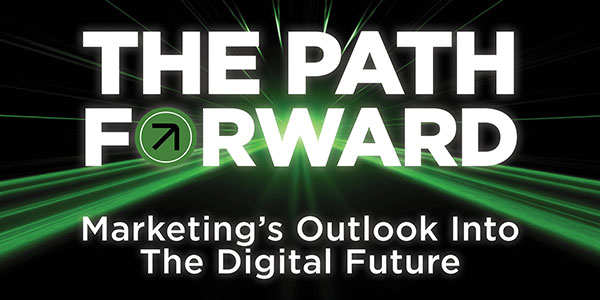Q&A: David Johnson On Managing The Data Explosion
September 15th, 2015 | Matthew Chung, Manager, Communications and Content

The digital age is being defined by an empowered consumer who demands offers that are tailored to them. CMOs are doing their best to respond but they face a stiff challenge to optimize all of the customer data at their disposal. Just how they are dealing with this “data explosion” is explored in a white paper by marketing analytics firm Ebiquity. ACA spoke with David “DJ” Johnson, VP Account Development at Ebiquity sister-company Stratigent, to dig a little deeper into the findings.
ACA: Your research indicates that CMOs are looking to new partners to help them manage data. What impact does that have on traditional marketing partners? Do you expect they will adapt to meet client’s needs?
Johnson: No doubt they will have to and in many ways they have already taken steps to adapt. Almost every agency talks about the use of data to drive decisions. The drive now is towards transparency of the data, prompted in large part by the rise of programmatic. It’s no longer acceptable to clients to make statements on performance and strategy without at least some data to back up the findings.
The thing about data – and the insights derived from data – is that it’s addictive. No one has ever looked at a performance report that contains a raft of clear and well-documented insights and replied “This is great, but next time cut back on the analysis.” CMOs will always crave more data, more insights and more access.
ACA: Do you think pressure to control costs will drive data management services into traditional agencies or are these “performance partners “ going to become the go-to partner?
Johnson: CMO’s ultimately are going to put partners to their highest and best use, and traditional partners have not typically been relied on for measurement and optimization of owned channels, or for big data initiatives. I think you’ll see the traditional partners adapt to the push for data transparency… to perform better, differentiate themselves and earn the business of the CMO. But looking from the other side, an independent partner will quickly lose their independence if they cross over too much into what an agency can do. If an organization has a vested interest in selling the creative and strategy, then as hard as they try, they can never fully divorce that from the advice and analysis they are delivering. Even if they do, the perception of bias is still there. I think they should remain separate but it goes back to using the partner for what they are best at delivering.
ACA: Is there another option for organizations looking to better manage data? Is building in-house capabilities a practical solution?
Johnson: Building an internal team and solution stack is an option, but organizations have to understand that it is not a simple undertaking free of risk. There is a lot of reorganization, resourcing and funding to make this a reality. The people you need are also in incredible demand; you are not only competing with other companies in your space, but also technology vendors and independent partners as well. There is an interesting shift in how people expect to balance work and life, and working flexible hours from home is an incredibly attractive option. An organization may be large enough to hire a great resource at a competitive rate, but if the existing work culture insists on a rigid team structure and hierarchy, as well as five-days-a-week of 9-5 office hours, the talent often won’t accept the job. There is just too much opportunity for them to get exactly what they want. If you do hire someone – especially someone junior with less experience but eager and willing to learn – moulding them into an expert takes considerable time and expense, there’s an opportunity cost as they are getting up-to-speed, the cost of training and certification and, once they attain that expert level, retention is going to be the main issue for the reasons explained above.
This is one of the benefits of a strategic consulting partner like Stratigent – our business is hiring the best talent and quickly building their skill set through day-to-day work with existing experts. The most successful companies mix independent partners and technology vendors with key internal resources to quickly realize results with data.
ACA: What advice would you have for marketers who want to better structure their organization for success?
Johnson: One of the first lessons we share with our clients is team structure itself doesn’t matter. The focus should be on the roles, skills and processes to ensure you are set up for success. From executive sponsorship and strategy, through implementation and into insights, the structure is less important than making sure everyone is on the same page and working towards a common goal.
ACA: We all know transparency is a growing concern. Can you shed any light into how your company is addressing it?
Johnson: Transparency is increasingly important with not only viewability of the ads, but how viewable, for how long, by who (human vs. robot), and on what domains (chances are that the domain where your ad appeared as a result of your buy then sold your ad to another site).
As a result, we have seen astounding metrics. For one client alone they thought they had 2.8 million views on an ad campaign. When we broke that down, it was really only about 500,000 unique views and roughly 72% of the clicks were from robot traffic. To top that off, about 20,000 of the sites were a result of “ad laundering,” which is when one site sells your ad to another block of sites that you have no clue about.
So, transparency goes well beyond just the ad spend and is really about solving a much larger issue out there. As I mentioned before, this is not just a passing trend. The more transparency and data access a CMO sees, the more they will want, as this is part of a larger effort towards optimization across both ad performance and on-site targeting and personalization.
ACA: Lastly, the report discusses the need to move past channel-focused strategies to reach the customer. Do you have any insight into how CMOs can make sure their partners are on board with this approach?
Johnson: What we are really talking about is the ability to capture, share and use accurate and timely data quickly and efficiently. CMO’s are tasked with optimization of the entire customer experience, from initial messaging and ad view, to on-site and mobile behaviour shaping, to ultimately a set of conversion events, wherever those occur, offline or online. And the relationship does not end with that success. It’s a continuous process – even if someone doesn’t convert again, they have the ability to influence others, so you need to ensure that areas like customer service, support and social are optimized as well.
There is no longer the luxury of optimizing a channel at a time. You could have the most brilliant marketing campaign with fantastic creative and off-the-charts viewability and targeting success, but if you don’t optimize the customer experience once they arrive on the owned channels you are missing tremendous opportunities and you’ll never see the expected results.
Compounding this is the “Amazon effect,” where visitors expect a fantastic and personalized experience online, but they have no concept of the amount of work and diligence it takes to provide that experience. Amazon has been at it for years and has spent massive sums of money to get where they are today, while other companies with very targeted services, advanced development skill sets and enviable organizational agility (think Uber) nail it as well. So the customer thinks this experience is something every company should be able to pull off. The only way to achieve it is through the intelligent use of data.

This is an incredibly exciting time right now, not only due to an explosion of available data, but the tools that are now able to make use of it much more effectively, and there are the people out there who can make magic happen with both.
To hear more from “DJ” and to be among the first to receive ACA-conducted, Canadian-specific research on “Marketing’s Outlook Into The Digital Future,” sign up for the ACA’s Fall 2015 Executive Forum on October 6.




